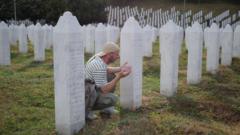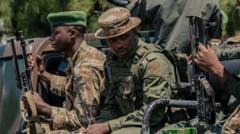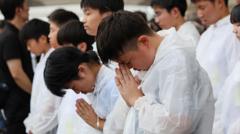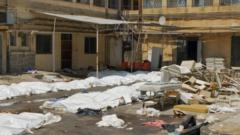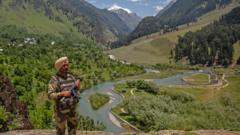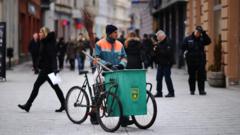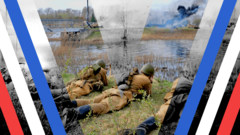The silence is shattered by a gut-wrenching scream as a group desperately sifts through the soil, uncovering remnants of a past marred by horror. This poignant scene unfolds at Sarajevo's War Theatre during the world premiere of the play "Flowers of Srebrenica," capturing not only the traumatic events of July 1995—the day over 8,000 Bosnian men and boys were murdered by Bosnian Serb forces—but also the enduring pain felt decades later in Bosnia and Herzegovina.
The Srebrenica massacre stands as one of history's most egregious war crimes in Europe since World War II. On that fateful day, thousands of Bosniaks sought refuge in the supposedly secure enclave of Srebrenica, sheltered by United Nations peacekeepers. However, as Dutch soldiers stood idle, General Ratko Mladić orchestrated the systematic execution of those seeking safety, with subsequent forced displacement of women and children.
In the aftermath, the perpetrators attempted to conceal their crimes by relocating the victims' remains, exacerbating the plight of families still searching for loved ones today. The search for closure continues in Potočari Cemetery, where DNA testing has aided many families in honoring their deceased.
The production of "Flowers of Srebrenica" also serves as a lens to view the growing ethnic discord dividing modern-day Bosnia and Herzegovina. Despite overwhelming evidence and international court rulings confirming the genocide, political leaders in Republika Srpska persist in denying the events of Srebrenica. "I thought that 30 years would bring change," reflects Selma Alispahić, the lead actress and former refugee. "But the truth is still denied by those benefiting from the fabrication of facts."
As tensions escalate, particularly under the leadership of Milorad Dodik, calls for reconciliation are met with repeated attacks on the legitimacy of the collective grief of the Bosniak community. Dodik's recent push to withdraw from national institutions has raised alarms about the fragile peace established by the Dayton Agreement, meant to end the violent conflict but ultimately solidified ethnic divisions.
Strikingly different narratives manifest in Sarajevo, where crowds gather to commemorate the victims, while in East Sarajevo, reminders of the atrocities remain conspicuously absent. "We need a clear presence of the international community," calls Christian Schmidt, the current High Representative, stressing that addressing these long-standing issues is paramount for ensuring peace and stability.
For many, including those like Mirela Osmanović, a worker at the Srebrenica Memorial Centre, the shared memories and resolve to honor the victims become overshadowed by the political machinations. Osmanović's worries echo across the community, illuminating the ongoing struggle for safety and recognition among Bosniaks who return to their ancestral lands, a chilling reminder of the past’s looming presence in their daily lives.
As the world reflects on the legacy of the Srebrenica massacre, tension remains the specter haunting Bosnia and Herzegovina, complicating the path towards understanding and reconciliation amidst the still-reverberating echoes of history.

